
A Disappointed Eurasian Kingfisher (Alcedo atthis)

African Pied Kingfishers Playing A Dangerous Game

The African Pied Kingfisher

The Eurasian Kingfisher (Alcedo atthis)

A Pair Of Brown Hooded Kingfishers

The Malachite Kingfisher

The Malachite Kingfisher

The malachite kingfisher (Corythornis cristatus) is a river kingfisher which is widely distributed in Africa south of the Sahara. It is largely resident except for seasonal climate-related movements. This species is common to reeds and aquatic vegetation near slow-moving water or ponds. The flight of the malachite kingfisher is rapid, with the short, rounded wings whirring until they appear a mere blur. The bird has regular perches or stands from which it fishes. These are usually low over the water. It sits upright, its tail pointed downwards. It drops suddenly with a splash and usually returns at once with a struggling captive.

The malachite kingfisher (Corythornis cristatus) is a river kingfisher which is widely distributed in Africa south of the Sahara. It is largely resident except for seasonal climate-related movements. This species is common to reeds and aquatic vegetation near slow-moving water or ponds. The flight of the malachite kingfisher is rapid, with the short, rounded wings whirring until they appear a mere blur. The bird has regular perches or stands from which it fishes. These are usually low over the water. It sits upright, its tail pointed downwards. It drops suddenly with a splash and usually returns at once with a struggling captive.

The Brown Hooded Kingfisher

The Eurasian Kingfisher (Alcedo atthis)

The Eurasian Kingfisher (Alcedo atthis)

The Eurasian Kingfisher (Alcedo atthis)

The Eurasian Kingfisher (Alcedo atthis)

The Eurasian Kingfisher (Alcedo atthis)

The Eurasian Kingfisher (Alcedo atthis)

The Eurasian Kingfisher (Alcedo atthis)

The Eurasian Kingfisher (Alcedo atthis)

The Eurasian Kingfisher (Alcedo atthis)

The Eurasian Kingfisher (Alcedo atthis)

The brown-hooded kingfisher (Halcyon albiventris) is a species of bird in the subfamily Halcyoninae. It is found in Angola, Botswana, Republic of the Congo, Democratic Republic of the Congo, Gabon, Kenya, Malawi, Mozambique, Namibia, Somalia, South Africa, Swaziland, Tanzania, Zambia, and Zimbabwe. It is a medium-sized kingfisher (approximately 23cm), with a big bill. In adult birds, both upper and lower mandibles are red. The bird has a brown crown, which is darker in adult females than males. The rest of the birds’ plumage is made up of brown, white, black and some blue feathers. The blue colour is best observed from behind. Adult birds call quite often, but they are not always that easily seen or photographed, preferring to spend time perched under a tree canopy.Hunting is usually from a perch, and prey captured on the ground or from branches of trees. Larger prey items are sometimes brought back to the perch, and beaten until dead and easier to swallow. They feed on insects, scorpions, reptiles, amphibians, occasionally other birds, and rarely on fish.

The brown-hooded kingfisher (Halcyon albiventris) is a species of bird in the subfamily Halcyoninae. It is found in Angola, Botswana, Republic of the Congo, Democratic Republic of the Congo, Gabon, Kenya, Malawi, Mozambique, Namibia, Somalia, South Africa, Swaziland, Tanzania, Zambia, and Zimbabwe. It is a medium-sized kingfisher (approximately 23cm), with a big bill. In adult birds, both upper and lower mandibles are red. The bird has a brown crown, which is darker in adult females than males. The rest of the birds’ plumage is made up of brown, white, black and some blue feathers. The blue colour is best observed from behind. Adult birds call quite often, but they are not always that easily seen or photographed, preferring to spend time perched under a tree canopy.Hunting is usually from a perch, and prey captured on the ground or from branches of trees. Larger prey items are sometimes brought back to the perch, and beaten until dead and easier to swallow. They feed on insects, scorpions, reptiles, amphibians, occasionally other birds, and rarely on fish.

Brown Hooded Kingfisher On A Branch
![The pied kingfisher (Ceryle rudis) is a water kingfisher and is found widely distributed across Africa and Asia. Its black and white plumage, crest and the habit of hovering over clear lakes and rivers before diving for fish makes it distinctive. Males have a double band across the breast while females have a single gorget that is often broken in the middle. They are usually found in pairs or small family parties. When perched, they often bob their head and flick up their tail. This kingfisher feeds mainly on fish, although it will take crustaceans and large aquatic insects such as dragonfly larvae. It usually hunts by hovering over the water to detect prey and diving vertically down bill-first to capture fish. When not foraging, they have a straight rapid flight and have been observed flying at nearly 50 km/h[8] In Lake Victoria in East Africa the introduction of the Nile perch reduced the availability of haplochromine cichlids which were formerly the preferred prey of these birds. They can deal with prey without returning to a perch, often swallowing small prey in flight, and so can hunt over large water bodies or in estuaries that lack perches that are required by other kingfishers. Unlike some kingfishers, it is quite gregarious, and forms large roosts at night.](data:image/gif;base64,R0lGODlhAQABAIAAAAAAAP///yH5BAEAAAAALAAAAAABAAEAAAIBRAA7)
The pied kingfisher (Ceryle rudis) is a water kingfisher and is found widely distributed across Africa and Asia. Its black and white plumage, crest and the habit of hovering over clear lakes and rivers before diving for fish makes it distinctive. Males have a double band across the breast while females have a single gorget that is often broken in the middle. They are usually found in pairs or small family parties. When perched, they often bob their head and flick up their tail. This kingfisher feeds mainly on fish, although it will take crustaceans and large aquatic insects such as dragonfly larvae. It usually hunts by hovering over the water to detect prey and diving vertically down bill-first to capture fish. When not foraging, they have a straight rapid flight and have been observed flying at nearly 50 km/h[8] In Lake Victoria in East Africa the introduction of the Nile perch reduced the availability of haplochromine cichlids which were formerly the preferred prey of these birds. They can deal with prey without returning to a perch, often swallowing small prey in flight, and so can hunt over large water bodies or in estuaries that lack perches that are required by other kingfishers. Unlike some kingfishers, it is quite gregarious, and forms large roosts at night.



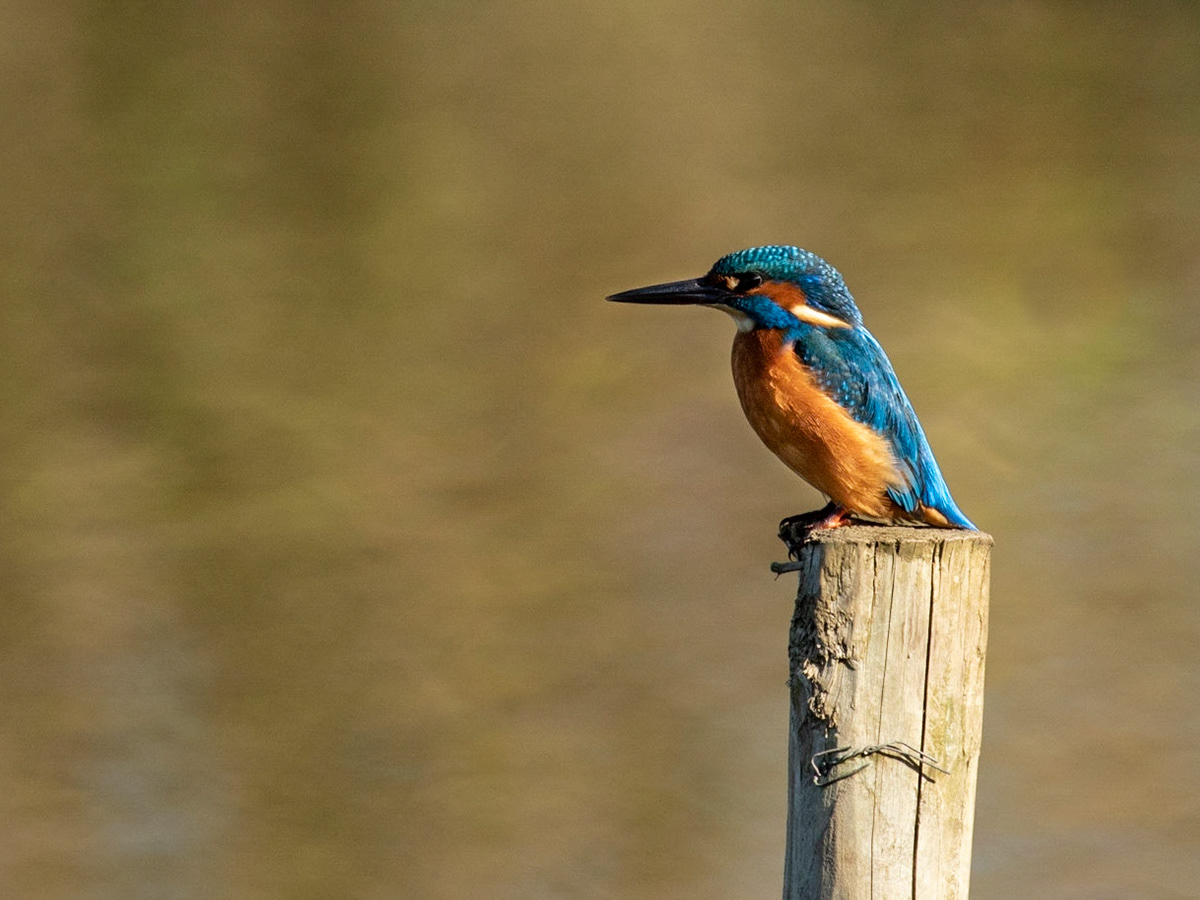




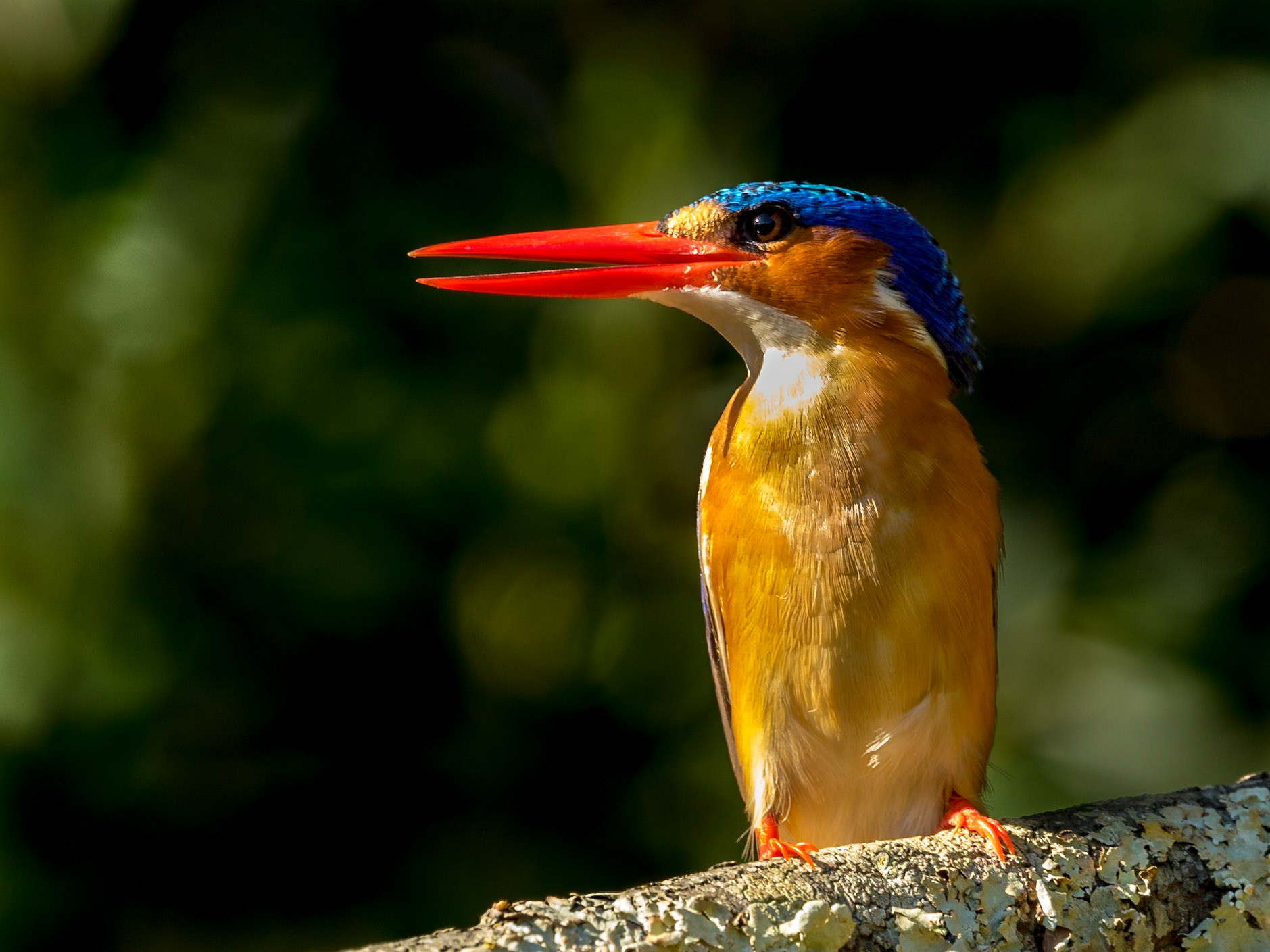
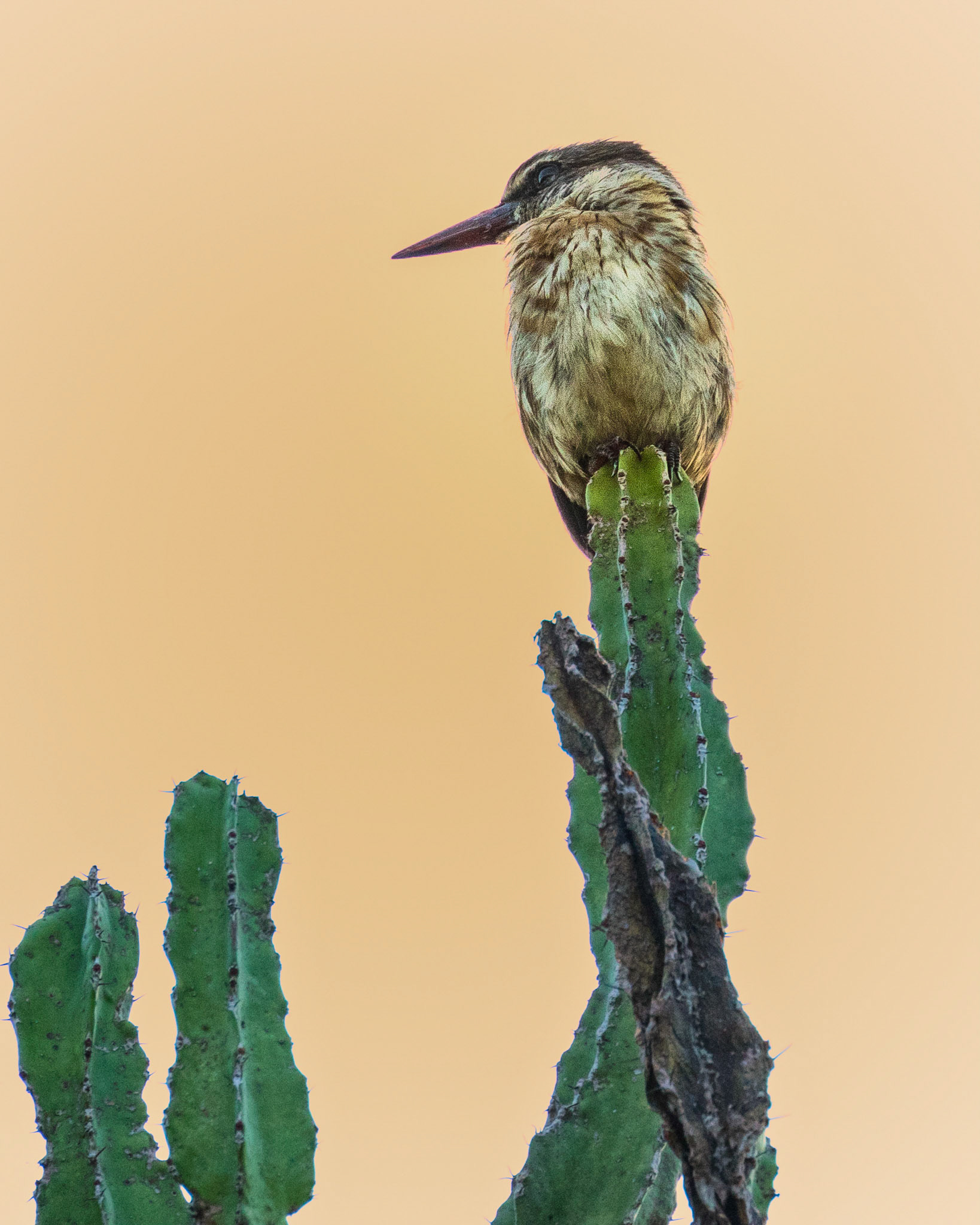
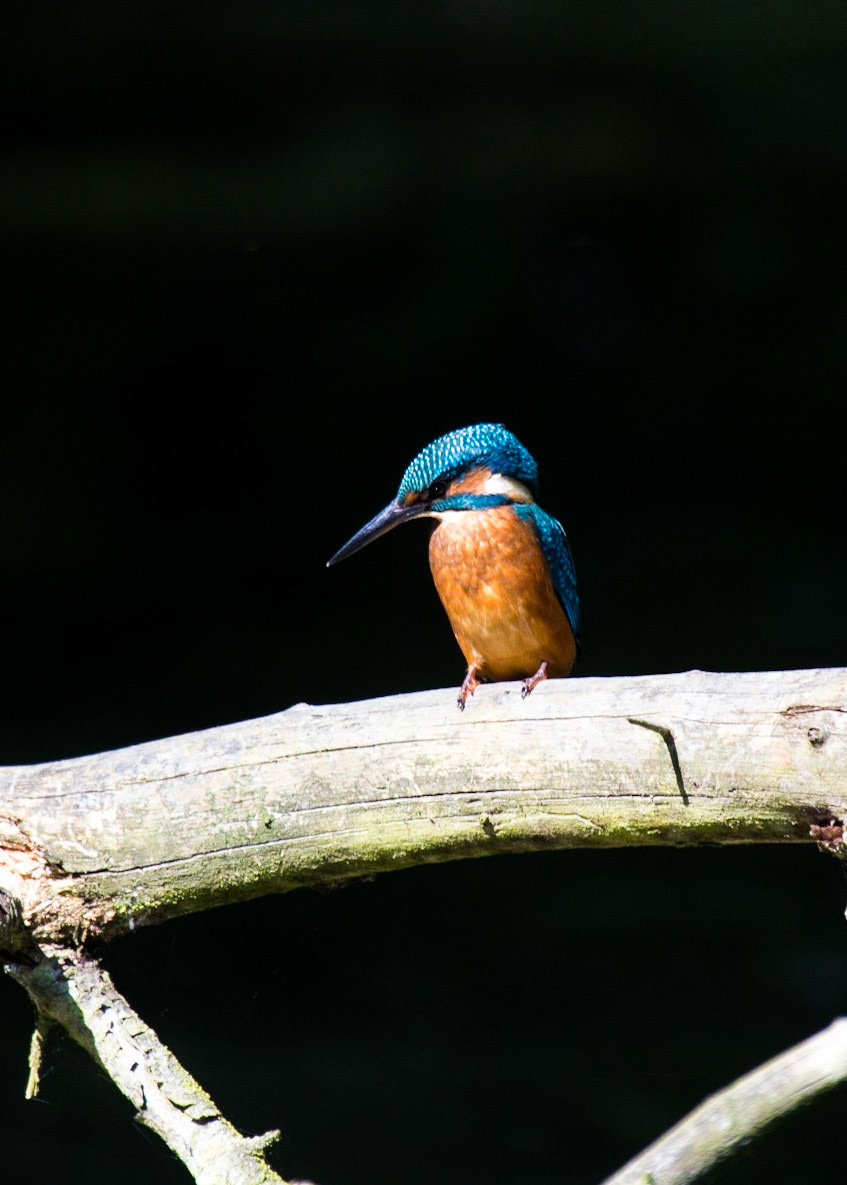
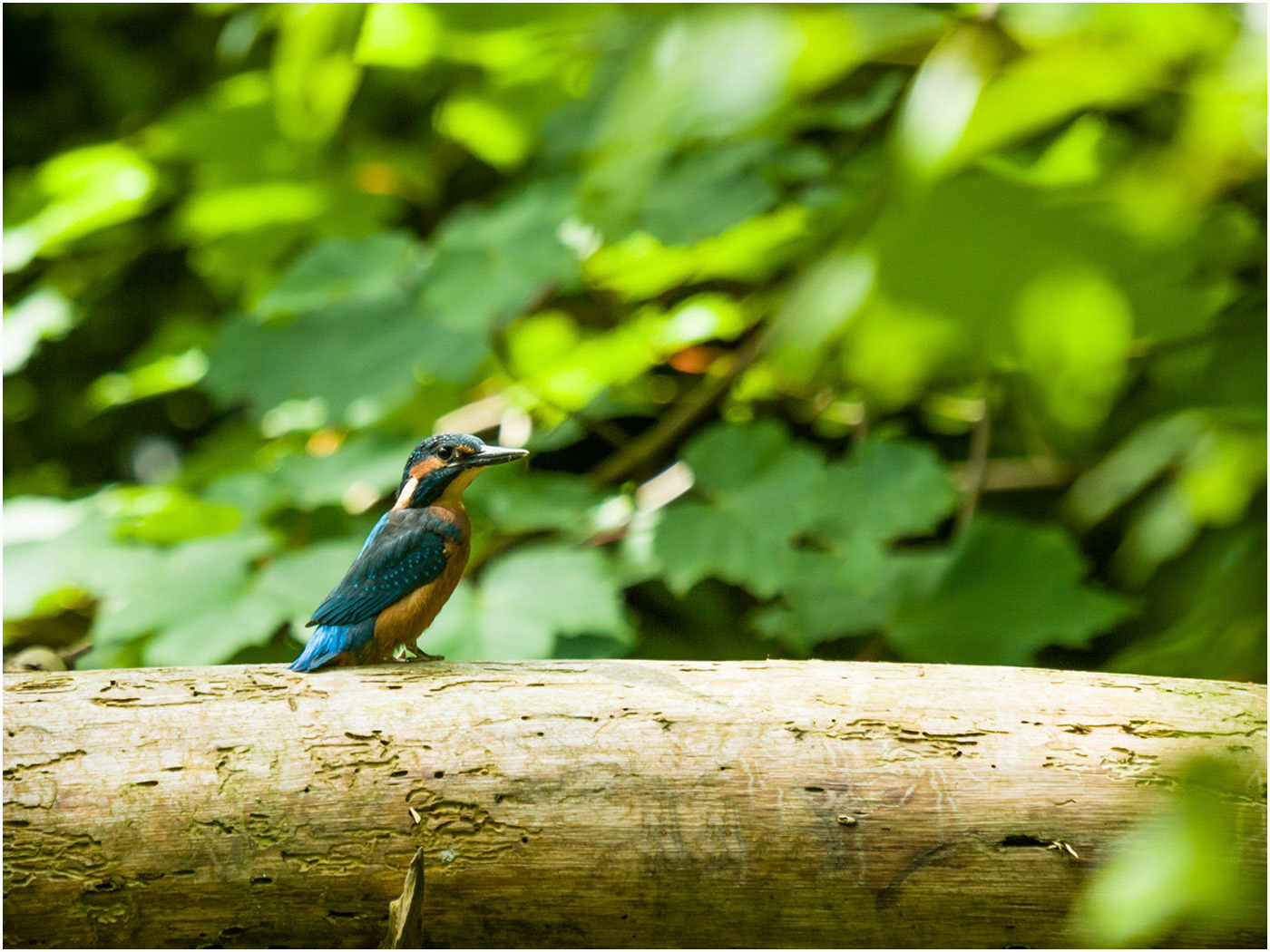

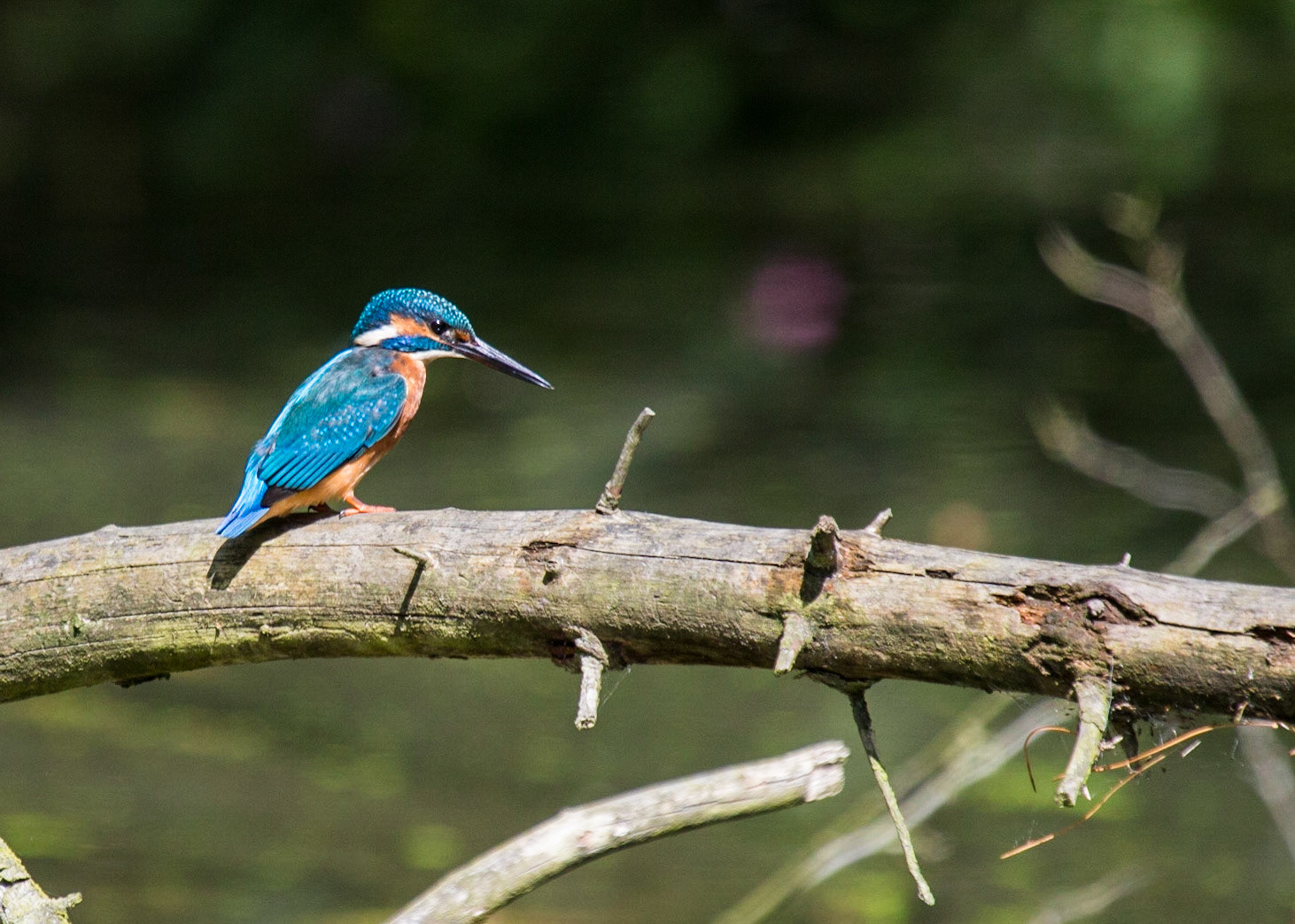
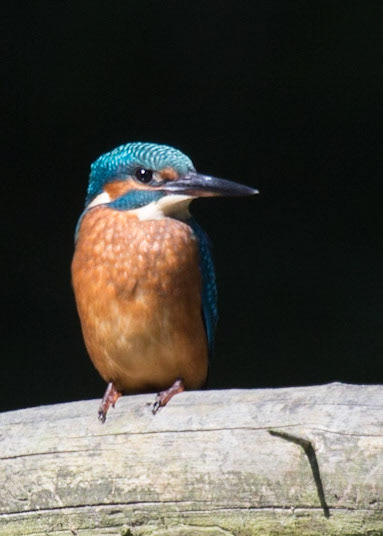


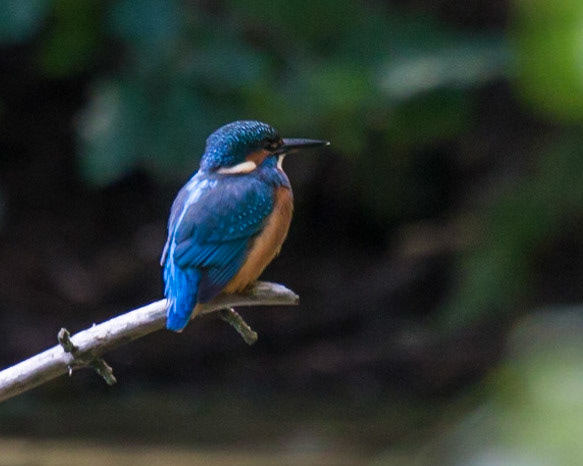
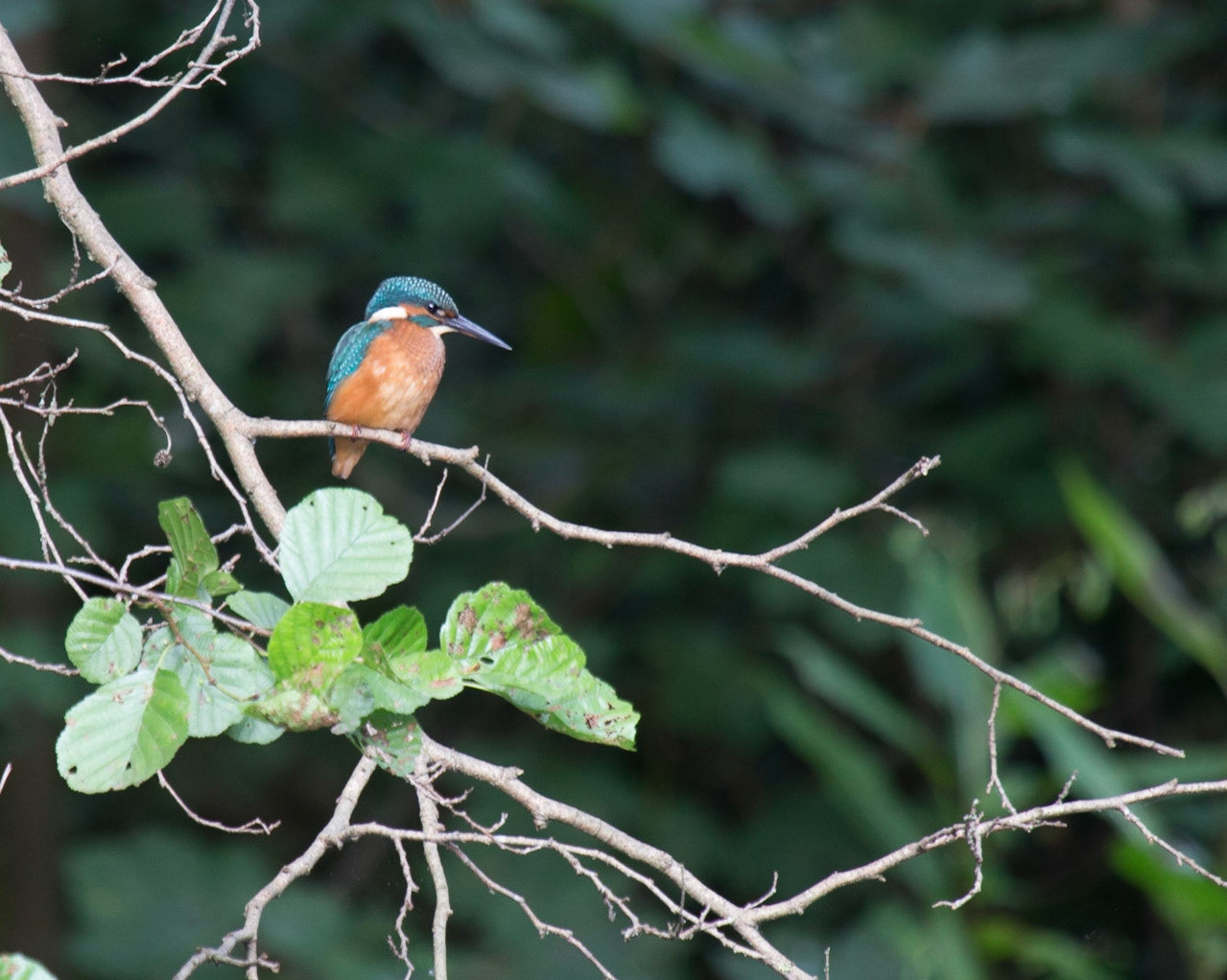

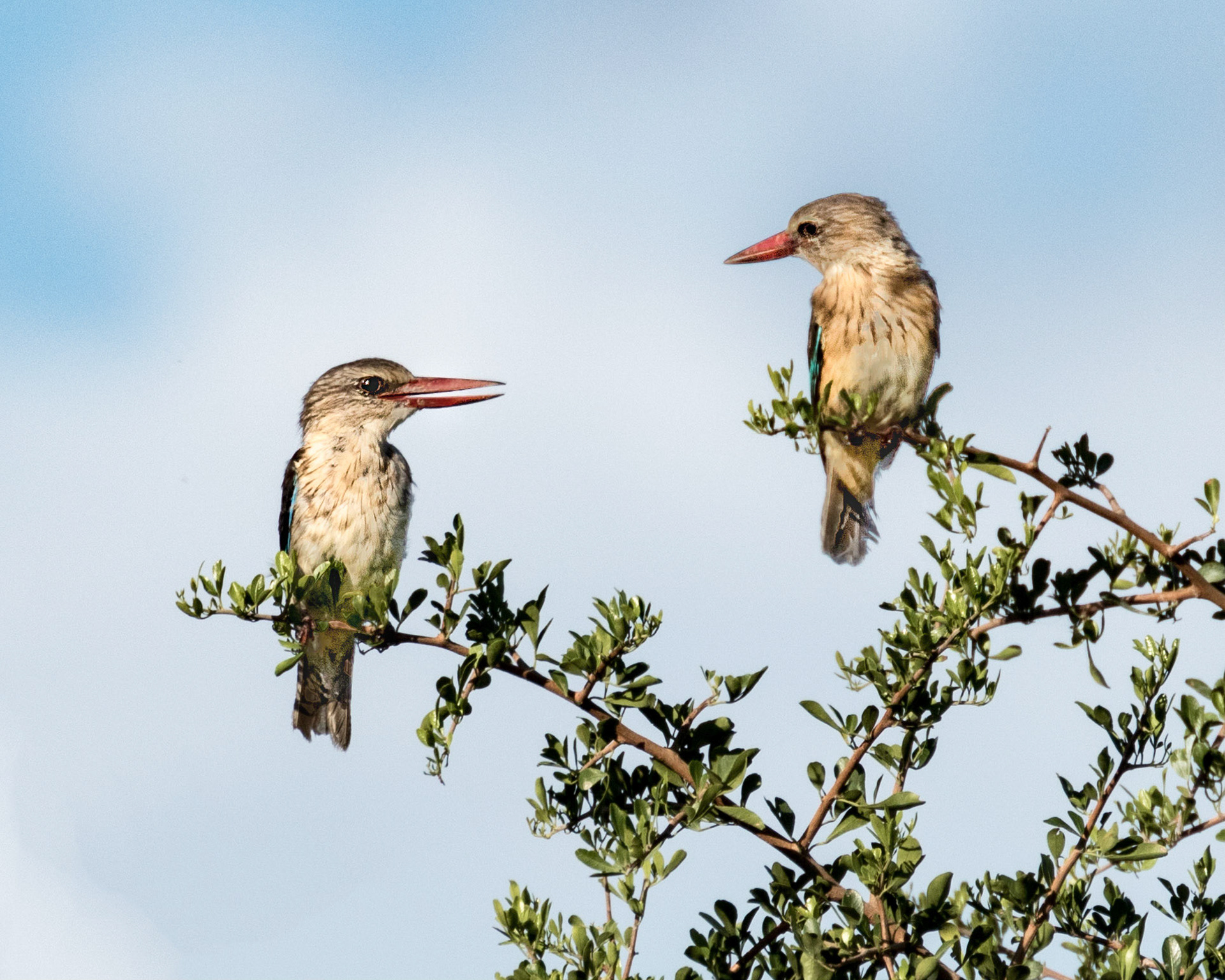

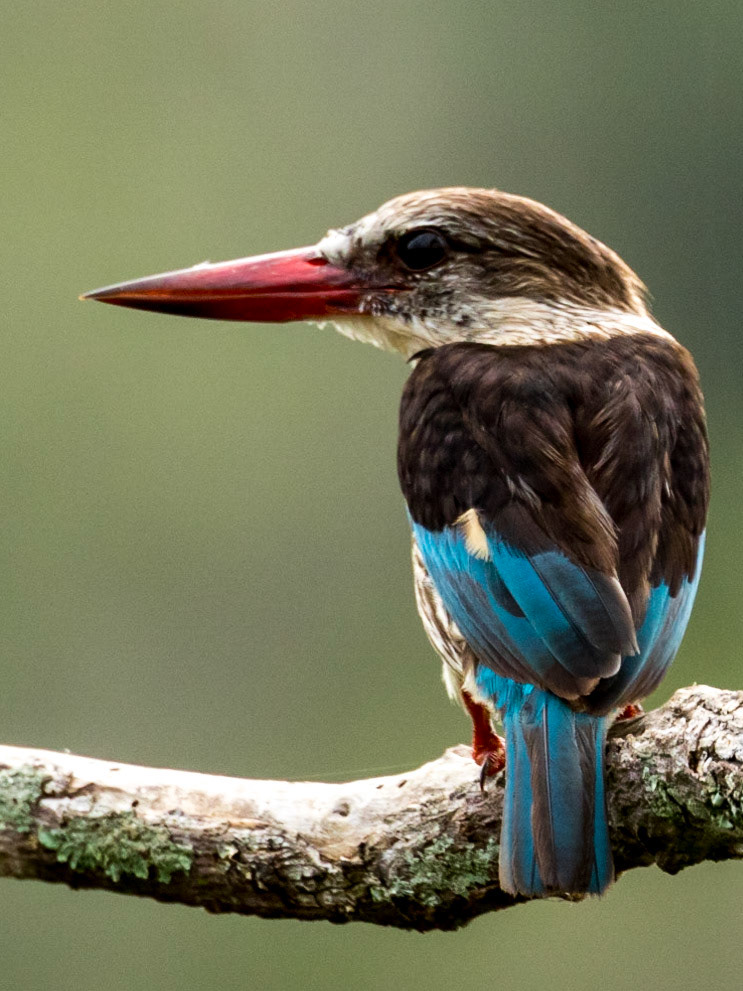
![The pied kingfisher (Ceryle rudis) is a water kingfisher and is found widely distributed across Africa and Asia. Its black and white plumage, crest and the habit of hovering over clear lakes and rivers before diving for fish makes it distinctive. Males have a double band across the breast while females have a single gorget that is often broken in the middle. They are usually found in pairs or small family parties. When perched, they often bob their head and flick up their tail. This kingfisher feeds mainly on fish, although it will take crustaceans and large aquatic insects such as dragonfly larvae. It usually hunts by hovering over the water to detect prey and diving vertically down bill-first to capture fish. When not foraging, they have a straight rapid flight and have been observed flying at nearly 50 km/h[8] In Lake Victoria in East Africa the introduction of the Nile perch reduced the availability of haplochromine cichlids which were formerly the preferred prey of these birds. They can deal with prey without returning to a perch, often swallowing small prey in flight, and so can hunt over large water bodies or in estuaries that lack perches that are required by other kingfishers. Unlike some kingfishers, it is quite gregarious, and forms large roosts at night.](https://cdn.myportfolio.com/69730556-ec56-4978-b376-879eac0ff674/e1dc0f7a-d495-4d08-b2bc-3a0dd6d86322_rw_1920.jpg?h=8e2a2b046b4bff16ce2b625129556cea)
